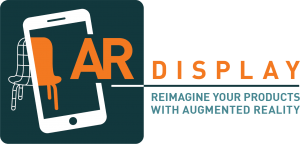Augmented Reality: Revolutionizing the Way Websites Engage Users
Augmented reality (AR) is a technology that superimposes digital images onto the real world. It has been around for a while, but in recent years, it has become more accessible to the general public, thanks to the proliferation of smartphones and other devices that can support AR applications. AR has many potential uses, and one of the most exciting is in website design.
AR can transform the way websites engage with users, creating a more immersive and interactive experience. Traditional websites rely on static images and text to convey information, but with AR, websites can offer a more dynamic and engaging experience. Here are some of the ways that AR can benefit website design.
Increased engagement
AR can increase user engagement by providing an interactive experience that goes beyond the static images and text of traditional websites. Users can interact with AR elements, such as 3D models, animations, and videos, making the experience more engaging and memorable. This increased engagement can lead to longer user sessions, more return visits, and higher conversion rates.
Improved brand recognition
AR can also help improve brand recognition by creating a more memorable experience for users. By incorporating AR elements into their website design, companies can differentiate themselves from their competitors and create a more unique brand identity. Additionally, users are more likely to remember a brand that offers a fun and interactive experience, which can lead to increased brand recognition and loyalty.
Drive sales
AR can also help drive sales by providing users with a more immersive and informative experience. For example, an e-commerce website could use AR to allow users to see how a product would look in their home or try on clothing virtually. This can help users make more informed purchasing decisions, leading to increased sales and customer satisfaction.
AR is not just beneficial for e-commerce websites; it can also be used for service-based websites. For example, a travel website could use AR to provide users with a virtual tour of a destination or show them what their hotel room would look like. This can help users make more informed travel decisions, leading to increased bookings and customer satisfaction.
However, implementing AR in website design is not without its challenges. One of the biggest challenges is the technical aspect of creating AR experiences. Developing AR applications can be time-consuming and require specialized expertise. Additionally, not all devices support AR applications, so websites that rely heavily on AR may exclude some users.
Another challenge is creating AR experiences that are not only engaging but also useful. Simply adding AR elements to a website may not be enough to create a meaningful experience for users. Websites need to carefully consider how they can use AR to enhance the user experience and provide value.
Despite these challenges, the benefits of using AR in website design are clear. AR can increase engagement, improve brand recognition, and drive sales. As AR technology continues to evolve and become more accessible, we can expect to see more websites incorporating AR into their design to create a more immersive and interactive experience for their users.




